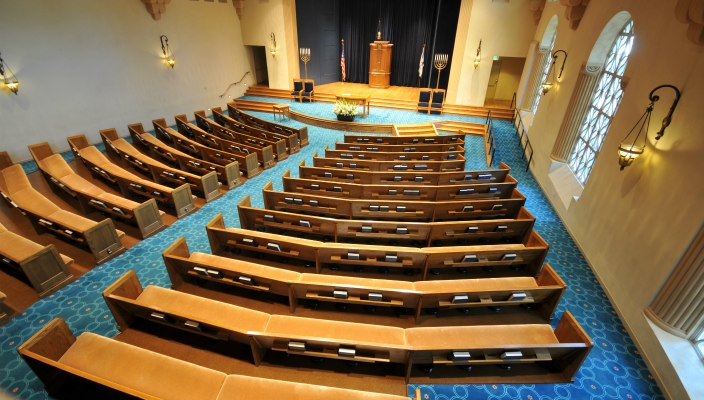How Synagogues Can Be a House of Prayer for All People
09/02/2016
“I will bring them to My holy mount, and I will cause them to rejoice in My house of prayer, their burnt offerings and their sacrifices shall be acceptable upon My altar, for My house shall be called a house of prayer for all peoples.” (Isaiah 56:7)
How is it possible to achieve the Prophet Isaiah’s promise when our synagogues still struggle to include people with disabilities – those who use wheelchairs or who communicate in ways that require us to change how we share information? Are we approaching this conversation with the assumption that one size fits everyone who lives with a disability? Have we committed ourselves to unrealistic expectations of what it means to include everyone?
It depends on how we interpret this iconic statement in the book of Isaiah – starting with assumptions that lie in the words “for all people.”
Many congregations assume that in order to open their doors to welcome everyone, they must spend a lot of money, change how they do things, start a “special” program for “those” people… They become so focused on “all people” that they lose God’s intent for a house of prayer.
Isaiah says that God will bring the people to God’s holy mount and cause them to rejoice in God’s house of prayer; their burnt offerings and their sacrifices shall be acceptable upon God’s altar. This is a place where each person can rejoice, can contribute and can participate. This is God’s definition of inclusion, not ours – and it’s time for us, in this month leading up to the Days of Awe, to expand our thinking about community, participation and belonging and what it really takes to achieve God’s inclusion.
Many Reform congregations have been devoted to the practical strategies to become more inclusive and welcoming of people with disabilities and mental health conditions and those who love them. I call this the “structure of inclusion,” which is, as we have seen across the Reform movement, well-embraced and very effective.
It’s our responsibility to organize ourselves to keep inclusion on the front-burner of congregational concerns. We need to continuously raise awareness and educate everyone in our synagogue community, and we need lay and professional leaders to shepherd how we do this.
The structure of inclusion creates and implements all tangible things we do: assessing the congregation, starting an inclusion committee, creating a roadmap or work plan, adding language that invites people to request accommodations, arranging ASL interpreters, inviting people with disabilities to participate in services, planning meaningful programs during Jewish Disability Awareness and Inclusion Month, and making sure we continuously evaluate and improve upon deliberate actions that promote inclusion.
When we focus too much on the structure of inclusion, though, we often find ourselves distracted from why we do this work in the first place, and that’s when we turn to the other part of Isaiah’s statement. This is when we tend to forget that the very people we seek to include are drawn to the synagogue and the community for the same reasons the rest of us are – to rejoice, to worship, and to be part of the community. People with disabilities are not congregational mitzvah projects.
This is belonging, the reason we’ve embarked upon the inclusion journey in the first place.
Belonging is a human need – and there is no greater opportunity to belong than in the Jewish community. Belonging is about relationships and personal connections, about respecting and being respected, about valuing and being valued. As the great faith community inclusion expert Ginny Thornburgh once said, “There should be no barriers to God’s love.”
Inclusion efforts should diminish barriers and obstacles because we see each person created b’tzelem Elohim, in God’s image. We see equity in our relationships with each other. We treat each other with respect and dignity, and we make no assumptions about what is important to each person or what they want from their personal synagogue participation.
Think about the ways you are included in your synagogue community. Do you get to do all the things that are important to you, things that give your life quality and meaning?
Shouldn’t that be what inclusion is all about? Inclusion means creatiing processes that eliminate obstacles to belonging so that all people can rejoice, worship, learn, find comfort and solace in times of need, rejoice with other Jews, and contribute to the community.
The spirit of inclusion promises a richer community for all.
To learn more about this topic, join Shelly Christensen’s live webinar “How to Be A House of Prayer for All People” on September 8 at 2:00pm EDT. Learn more about the Union for Reform Judaism’s High Holidays Inclusion Learning Series.

